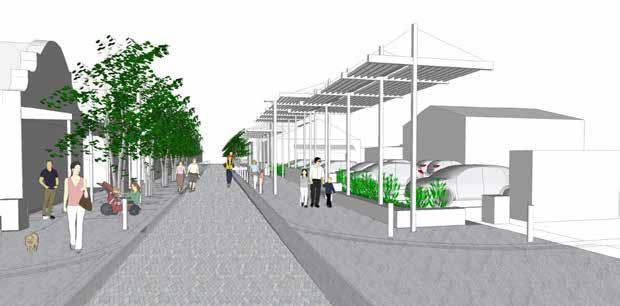18
www.thevillagenews.co.za
10 February 2021
MY ENVIRONMENT
Conserving our beautiful Bontebok By Dr Anina Lee
W
hat is the difference between a Bontebok and a Blesbok? It would not be surprising if many people did not know. The two animals look very similar as they are both subspecies of a common ancestor, Damaliscus pygargus, which is no longer around. The Bontebok is Damaliscus pygargus pygargus, and the Blesbok is Damaliscus pygargus phillipsi. So how can we tell them apart? Bontebok are dark chocolate brown with a purplish sheen. They have a continuous ‘bles’ (blaze) on the forehead and a distinct white rump. Their name incorporates the Afrikaans word ‘bont’, meaning multi-coloured. The Blesbok are more ruddy brown, their ‘bles’ is broken into two white patches, and their rump has less white colouring.
In times past, their common ancestor occurred all over South Africa, but over time those that inhabited the southern coastline and those that inhabited the Highveld gradually evolved into genetically different sub-species. The Cape
Conservation authorities became involved and in 1931the Bontebok National Park was established near Bredasdorp for their conservation. Attempts at breeding from this herd were successful, but despite this, they did not thrive.
Fold Mountains formed the divide. The southern subspecies, the Bontebok, evolved to eat the plants available in their fynbos biome, especially renosterveld. Their northern cousins, the Blesbok, adapted to grassier plains. When the first settlers arrived at the Cape, the distinctions were not important. They were antelope to be shot for the pot or just for fun – because they could. Farmers deemed them to be pests as they competed for grazing with their livestock. Also, renosterveld was rapidly being ploughed up for agriculture, leaving the Bontebok with limited pasture. The wholesale slaughter of both Bontebok and Blesbok decimated their numbers. The settlers first targeted Bontebok, living in the southern coastal areas at the Cape, so they bore the brunt of the killing. By the early 20th century there were only 17 animals of this species left and the species was well on the way to human-made extinction – just like the Bluebuck and the Quagga. This small herd of 17 Bontebok existed on a farm near Bredasdorp in the Overberg. The farmer, more conscious of possible species extinction, or perhaps to make them easier to hunt, decided to fence them in. The fence was not very high, but it had the desired effect. While most other antelope species would easily jump such a fence, the Bontebok could not. Like the proverbial ‘white men’, Bontebok can’t jump. This saved the species.
PHOTO: bicyclesouth.co.za
As it turned out, the pasture in the area did not provide sufficient nourishment. It was evident that if Bontebok were to be saved from extinction, they would have to be moved. And so it came about that the whole Bontebok National Park was transferred from Bredasdorp to an area just south of Swellendam, its present location. Here their numbers rapidly increased and reached the maximum carrying capacity of this tiny Reserve, namely 200 animals. Excess animals are actively relocated to other suitable areas, under both public and private management. They are very popular acquisitions by commercial game ranches for ‘trophy’ hunting. While I am not a fan of hunting, it is often the commercial value of an animal that secures its survival.
The Bontebok (above) (Damaliscus pygargus pygargus) and the Blesbok (below) (Damaliscus pygargus phillipsi) look very similar as they are both sub-species of a common ancestor. Most people can’t tell them apart but if you look carefully there are subtle differences in colouring and pattern.
However, there are still concerns about their well-being because all the animals originated from such a tiny genetic pool and are therefore genetically less robust. What can we do to help the conservation of the beautiful Bontebok? Visit the Bontebok National Park, and through our support, ensure that their protection remains financially viable.
Visit the Bontebok National Park Only a few kilometres from Swellendam and easily accessible from the N2, the Bontebok National Park is the perfect place for a day visit with family and friends.
Rhebuck, Red Hartebees, as well as many smaller mammals and around 200 species of bird.
Recently upgraded day-visitor facilities include a rest camp and recreational braai facility called ‘Die Stroom’, where you can enjoy a picnic or a braai on the banks of the Breede River, have a swim or go for a hike.
Extend your stay by camping overnight under the stars at the designated campsites within the park, or book one of the 10 chalets that each enjoy scenic views of the Breede River Valley and Langeberg Mountains from private sun decks.
Because of its small size, visitors can drive around the whole park in a few hours. It is home to Bontebok, Grey
For more information visit sanparks.org/parks/bontebok or call 028 514 2735.























